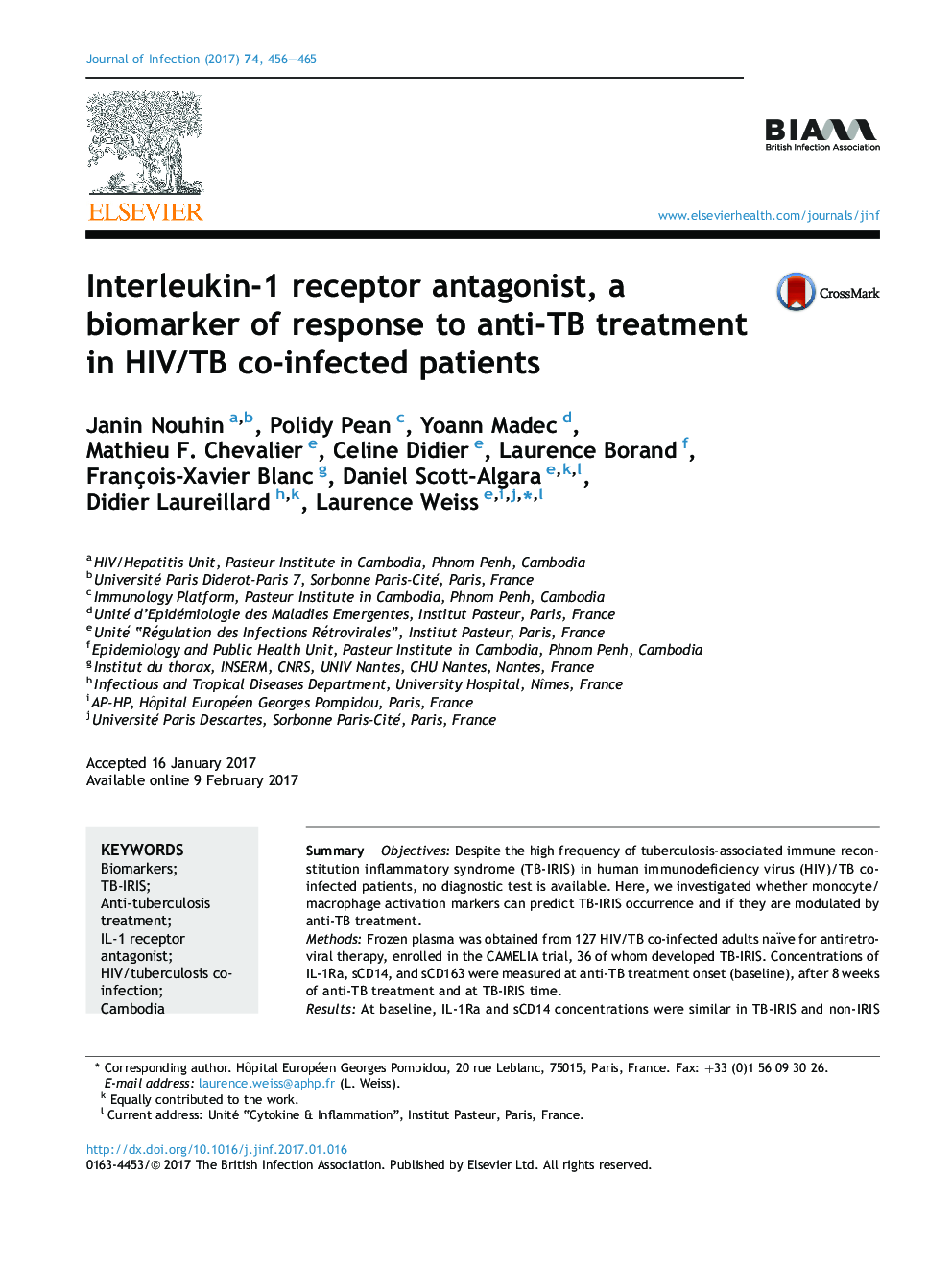| Article ID | Journal | Published Year | Pages | File Type |
|---|---|---|---|---|
| 5668698 | Journal of Infection | 2017 | 10 Pages |
â¢None of the IL-1Ra, sCD14, and sCD163 biomarkers are associated with TB-IRIS.â¢At IRIS event, IL-1Ra and sCD14 concentrations are higher in TB-IRIS patients.â¢sCD14 concentrations remain stable under anti-TB therapy in HIV-infected patients.â¢IL-1Ra concentrations significantly decrease within eight weeks of anti-TB therapy in HIV-infected patients.
SummaryObjectivesDespite the high frequency of tuberculosis-associated immune reconstitution inflammatory syndrome (TB-IRIS) in human immunodeficiency virus (HIV)/TB co-infected patients, no diagnostic test is available. Here, we investigated whether monocyte/macrophage activation markers can predict TB-IRIS occurrence and if they are modulated by anti-TB treatment.MethodsFrozen plasma was obtained from 127 HIV/TB co-infected adults naïve for antiretroviral therapy, enrolled in the CAMELIA trial, 36 of whom developed TB-IRIS. Concentrations of IL-1Ra, sCD14, and sCD163 were measured at anti-TB treatment onset (baseline), after 8 weeks of anti-TB treatment and at TB-IRIS time.ResultsAt baseline, IL-1Ra and sCD14 concentrations were similar in TB-IRIS and non-IRIS patients. sCD163 concentrations, although significantly higher in TB-IRIS patients, did not remain associated with TB-IRIS occurrence in multivariate analysis. At the time of TB-IRIS, patients displayed higher concentrations of IL-1Ra (p = 0.002) and sCD14 (p < 0.001). The most striking result was the significant decrease in IL-1Ra after 8 weeks of anti-TB treatment (median reduction: â63% (p < 0.0001)).ConclusionsNone of the biomarkers tested was associated with TB-IRIS occurrence. However, repeated measurement of IL-1Ra could help for the diagnosis of TB-IRIS. The substantial reduction of IL-1Ra under treatment suggests that IL-1Ra could be a surrogate biomarker of anti-TB treatment response in HIV-infected patients.
